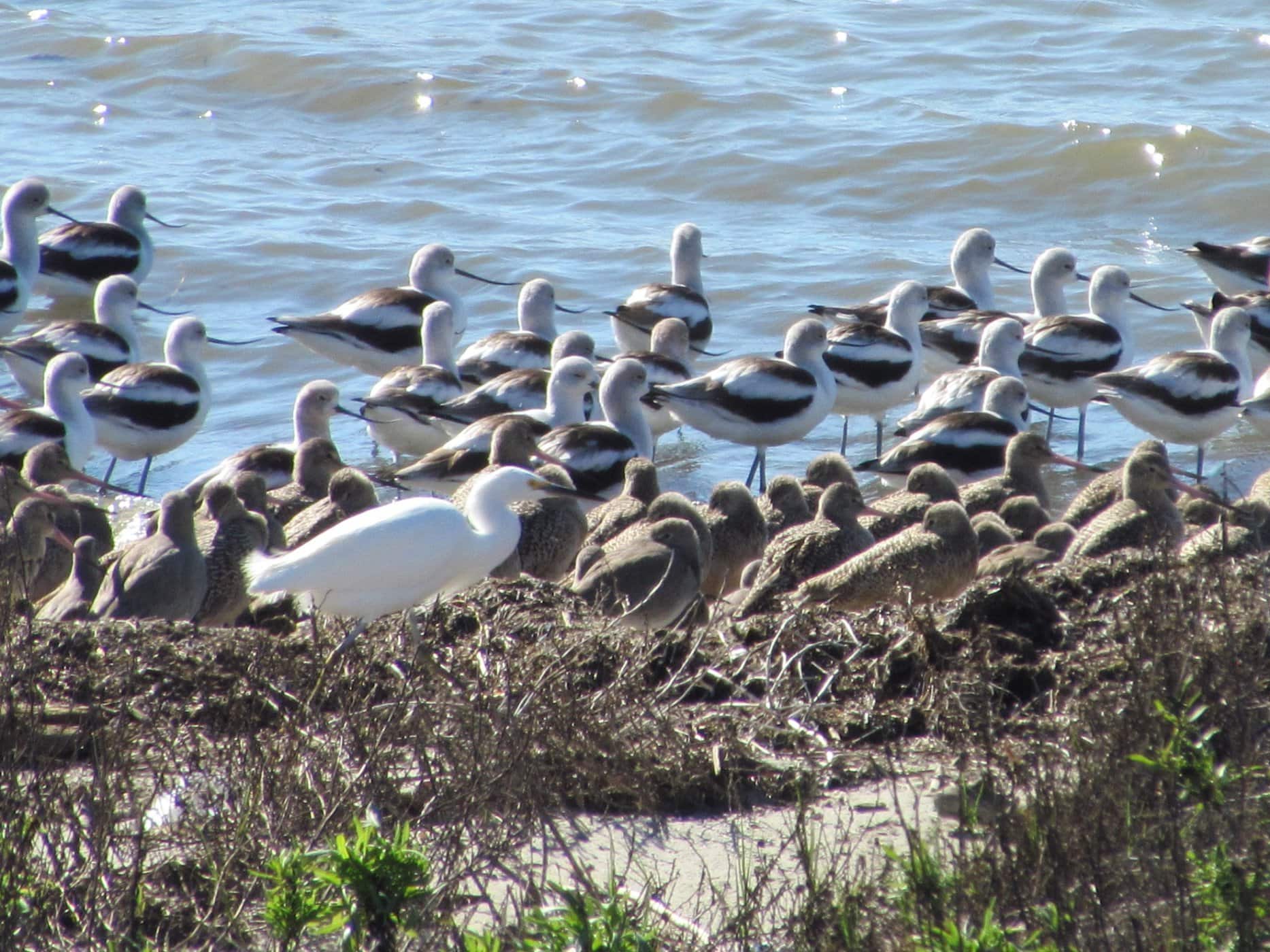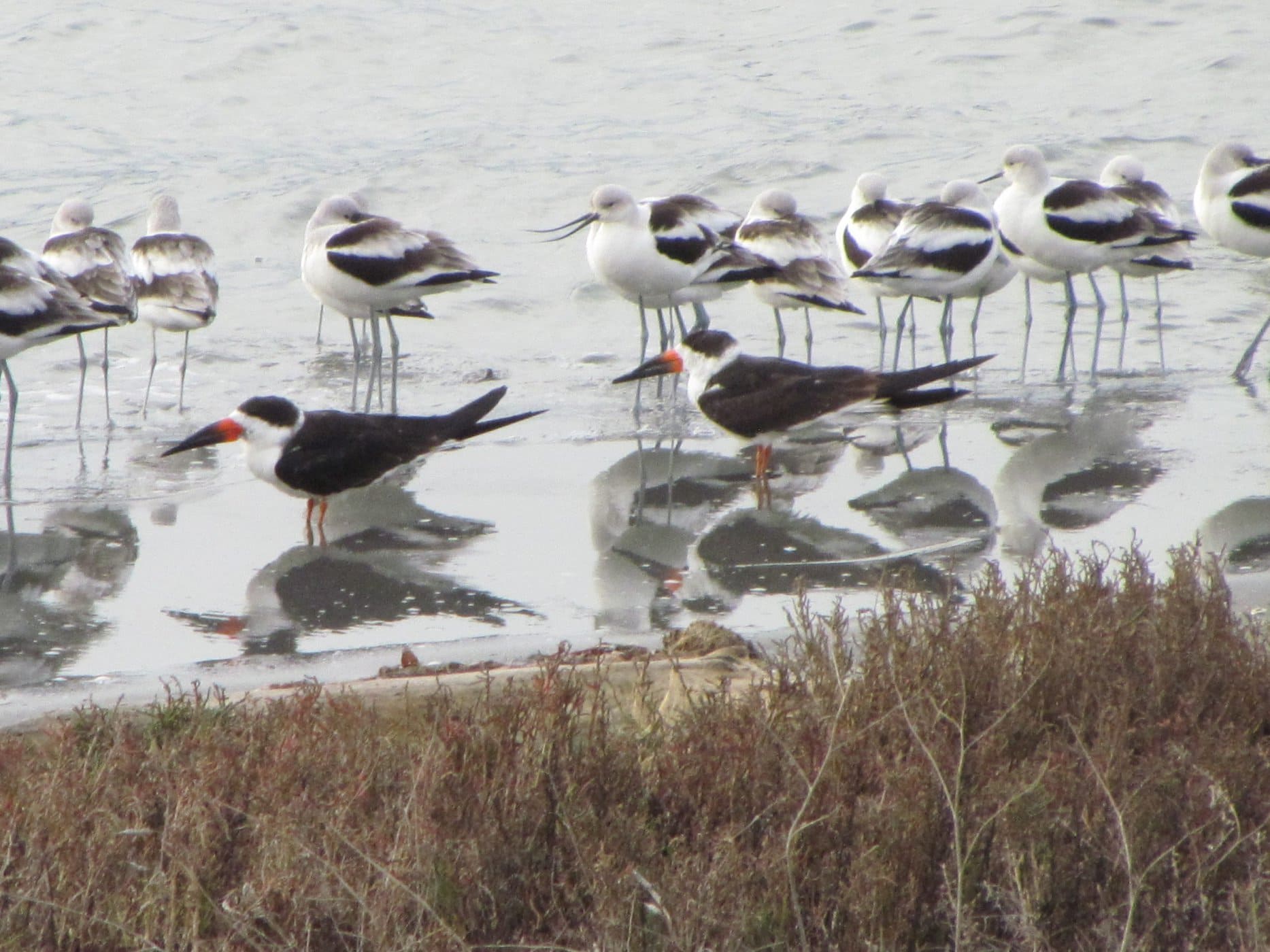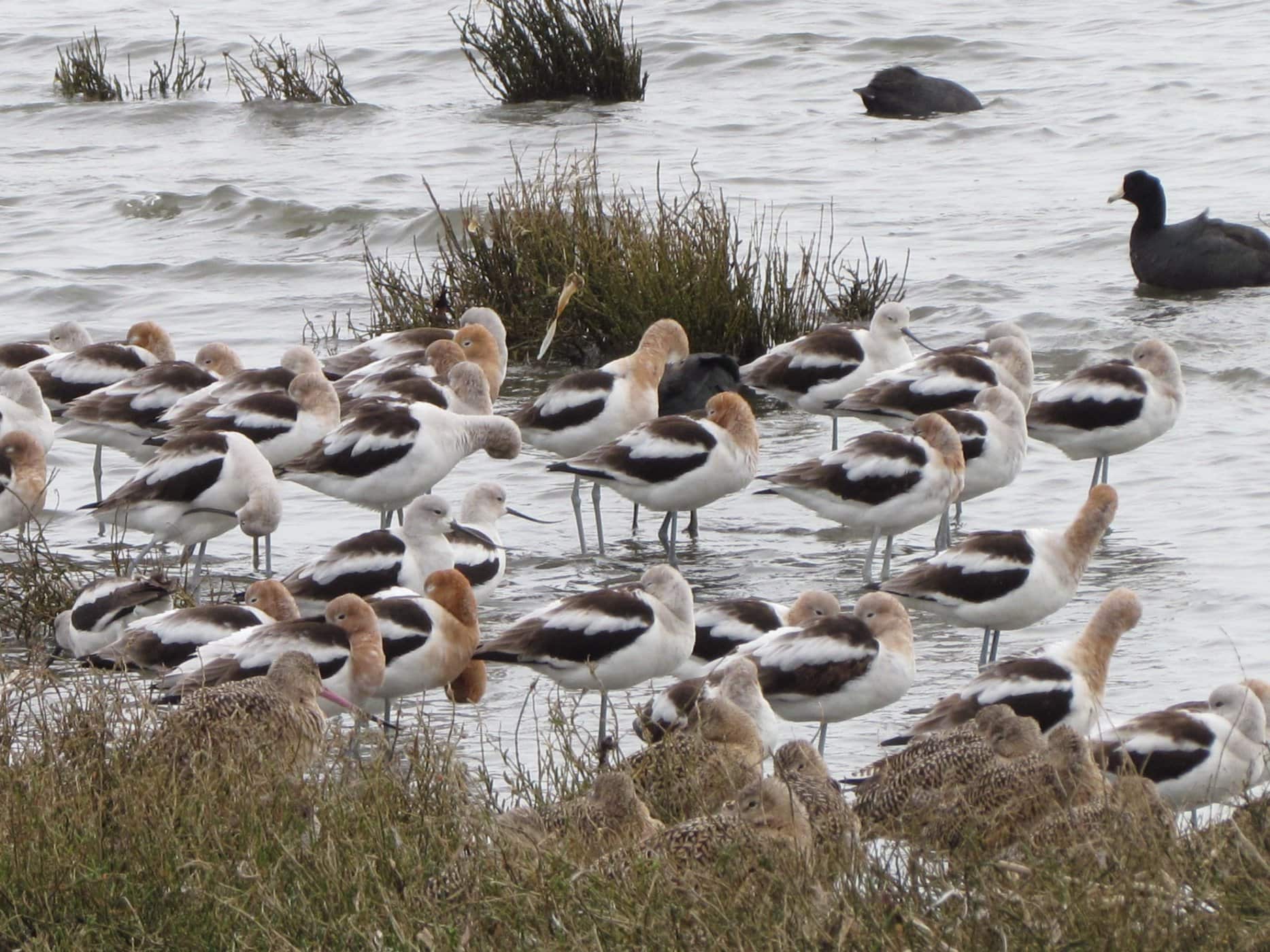Goodbye Until an Unknown Time
By Marjorie Powell
I felt a pang of disappointment as I canceled the hotel reservation for the Sage Grouse three-day trip that I signed up for the first day that the Birdathon trips were announced. I was really looking forward to seeing the males perform at the Lek, even after I heard about the slog through the snow and mud in the dark last year, when it was uniquely cold and wet.
To console myself, I went across the street to the platform at Elsie Roemer Bird Sanctuary on the southeastern corner of Alameda, then walked along the path between homes and the edge of the Bay. As I walked, I realized that I was also missing the American Avocets that had so recently fed and rested along the shoreline.

During the last weeks in February I routinely counted 100 or more of the Avocets in the equivalent of a city block of shoreline. I had noticed that many of these striking, black-and-white birds were molting into their Alternate, or breeding, plumage, with the coffee-brown head, neck and upper belly, a sign that they will leave soon for their nesting sites. I am comforted to know that some of them do not go far, but nest at the Alameda Wildlife Reserve on the old Naval Base at the west end of Alameda as well as at Martin Luther King Jr, Regional Seashore in Oakland. I am also comforted to know that they will be back, although now I can’t remember which month they return. Is it December, or do I only see the larger flocks of them in February and early March?
I’ve watched, and learned about, American Avocets during the six years that I’ve lived across from the Sanctuary in Alameda.

They are tall enough and their black-and-white winter coloring is distinctive enough that even non-birders can identify them easily without binoculars. When they leave Elsie Roemer to breed, they lay their eggs in a scrape in the bare ground lined with vegetation and, sometimes, with down from the female’s breast. They lay 3-4 eggs, which are incubated for three to four weeks. The babies can walk and swim within a day of hatching. Avocets feed on small invertebrates as well as seeds from aquatic plants. They find their food by scything their bills back and forth on the surface of the water. I assume that their genus name, recurvirostra, comes from the distinctive, up-curved-bill. While male and female Avocets look alike, the female’s bill has a more pronounced curve, which you can start to recognize when you’ve looked carefully at enough Avocet bills. They are at risk from rising sea levels, which may drown their nests, and pollution, including mercury.

And of course, the Avocets are replaced by other birds that use the shoreline in the spring and summer. Already I am seeing Terns mixed in with the Gulls, Marbled Godwits, and Black-bellied Plovers slowly acquiring their breeding colors, getting ready to make their departure. And this week there seem to be hundreds of Western Sandpipers and the somewhat larger Dunlins. I’ll have to watch to see when they leave and learn where they breed. The scene changes over the months, and I am learning the pattern as I look down from my balcony. I don’t have a back yard in which to bird, but I have the continually fascinating shoreline at Else Roemer just across the street. Thank you to all those who worked to save this strip of the current Alameda shoreline from more fill and construction.

Back to the Avocets. A friend, Jerry Harrison, wrote an article recently on the American Avocets for the Alameda Sun. You can find a copy of the article here.
As a consolation for missing the American Avocets outside my window, I’ve been wearing my Avocet earrings. I bought them at one of the visitor centers at the Salton Sea, on a GGBA birding trip this past January with Nature Trip, Eddie Bartley’s and Noreen Weeden’s company, so wearing them also reminds me of the birders on that trip and the marvelous birds that we saw.

Although I routinely take pictures, I have no good ones of the masses of American Avocets at Elsie Roemer this or any previous February. One photo does show a scattering of the birds; it was taken to capture the two Black Skimmers that visited in late December and early January, a rarity for Alameda. A search of past years’ photos revealed pictures of Avocets during the first three months of almost ever year in the past five.

The sequence of pictures reminds me that the Avocets will return after breeding season, along with other birds migrating further south for the winter, and that Birdathon and its special trips will return in 2021. And maybe there will be some great birding trips this fall, not to see the Sage Gouse perform to attract mates, but to see birds in their fall migration. I will have to be especially diligent to be sure I go on several walks, and maybe a special trip or two, in the fall to make up for this lost spring. And I can look forward to the Sage Grouse trip next year. In the meantime, I’ll keep birding as I can, if only from my balcony, while I shelter in place.
About Marjorie: A casual birder for many years, when she retired and moved from the Chesapeake Bay to the San Francisco Bay (Alameda), Marjorie joined GGBA and started to become a more serious birder, taking classes and going on field trips, including Birdathon trips.
We want to feature your stories about birding during this crisis. Do you have a shelter-in-place birding story you’d like to share with us? Contact GGBA’s Communications Manager, Melissa, at mramos@goldengatebirdalliance.org with 800-1200 word testimonials. Wishing you joy and peace through birding.
